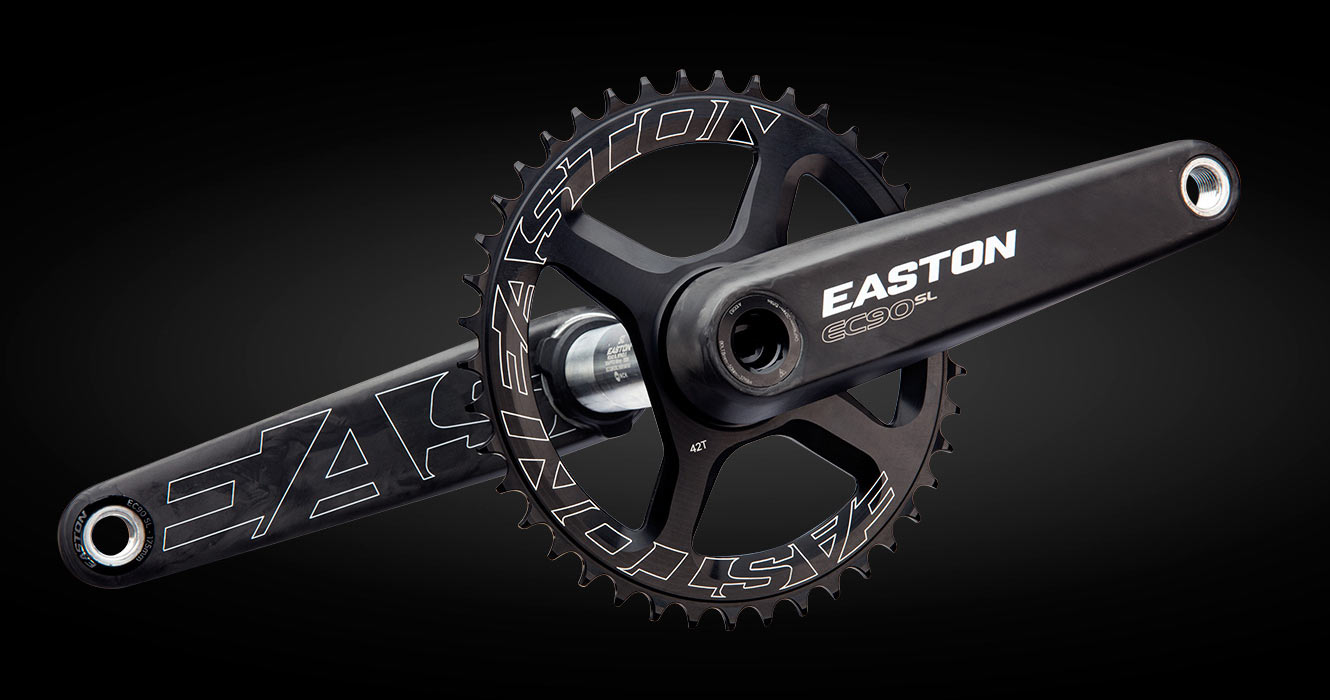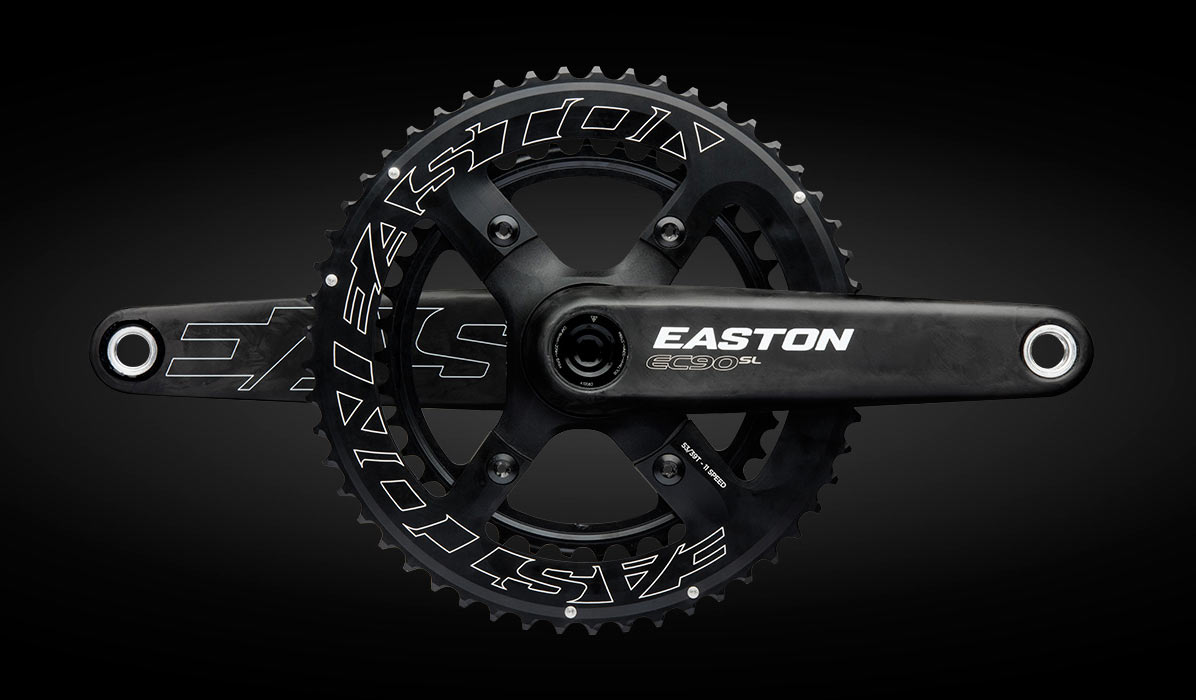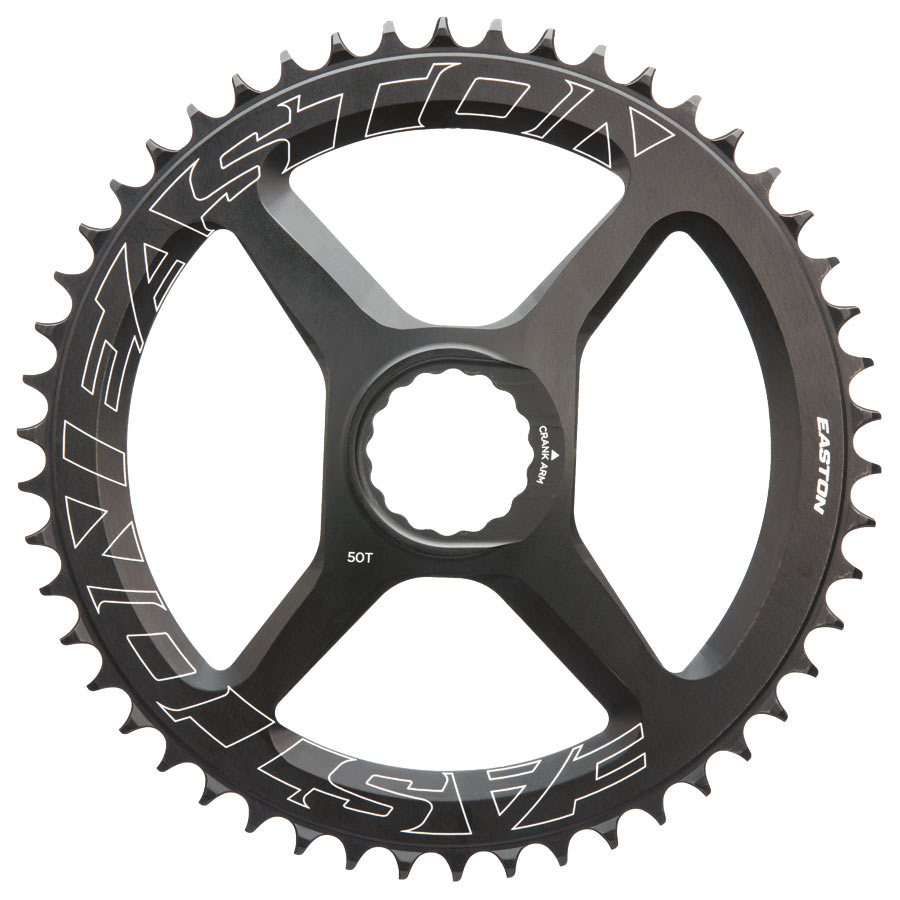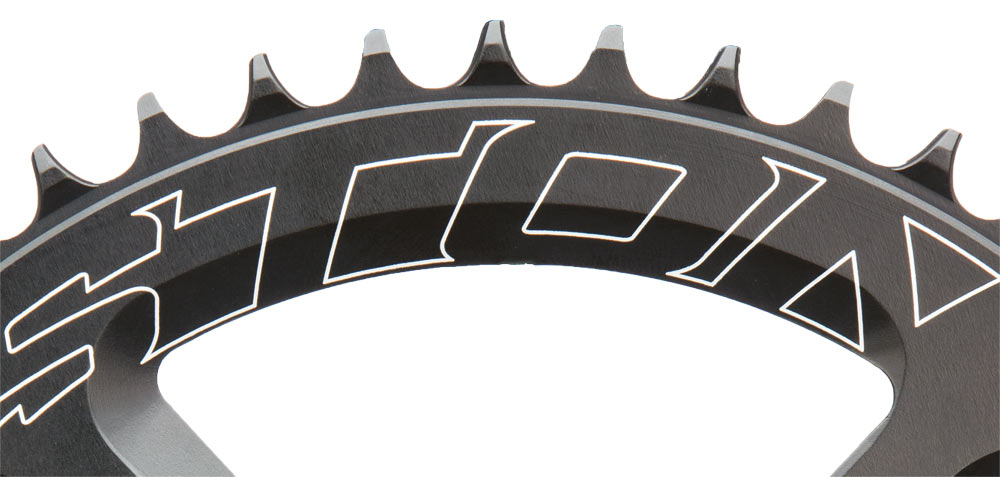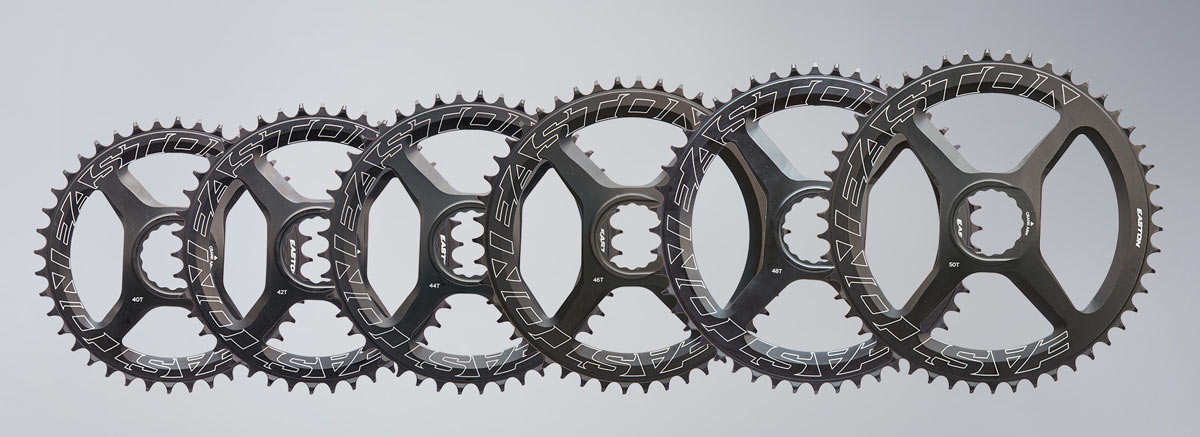Earlier this week, Easton unveiled their re-entry into the carbon crankset market. It highlights the synergy of their merger with Race Face by sharing the Cinch chainring attachment design and composite crank arm construction. After all, the Race Face Next SL cranks are among the lightest out there, so it’s a good place to start.
We sent a few questions to Easton when they came out, where they were sent to the engineering team for proper answers, and now we’ve got them back along with the official photos of those and their new bottom brackets…
BIKERUMOR: What is different about the tooth profiles here versus RF mountain chainrings?
EASTON: We don’t really want to compare the Easton rings to the RF rings as they have been designed for different applications. For example with the RF mountain rings the tooth profile height and shape needs to consider possible rock strikes and we didn’t have that limitation for the Easton rings.
BIKERUMOR: What specifically makes them “optimized for cyclocross” compared to mountain chainrings?
EASTON: Our direct mount rings use a new narrow/wide design specifically tailored to road/cx/gravel applications. The individual tooth profile has moved from the traditional symmetrical shape to more directional specific design with the intention to create a positive chain roller engagement to help with chain retention, critical to prevent chain slip and bounce over rough terrain. Combined with taller teeth the Easton narrow/wide ring can be used without a chain guide or clutch derailleur.
Wide-tooth material has been removed from each side to reduce running noise and drag when running at extreme edges of the cassette. Combined with additional material removal at the base of the teeth ensuring excellent mud shed and chain retention in the muddiest of CX conditions.
To connect the outer ring to the Cinch interface an asymmetric four arm shape allowing for larger stiffer arms in the power zones of the pedal stoke and an overall reduction of weight with thinner arms in pedaling zones that experience less torque.
All Easton rings feature the Cinch Direct Mount System making a swap between ring sizes or even between double ring configurations a fast and simple procedure. Using the Cinch DM System also provides a significant weight savings by eliminating the material overlap and extra bolt hardware that is required for a traditional spider with chainring configuration.
- The rings have 47mm chainline with the Easton 129mm spindle, this is the optimal chainline for 135/142mm rear hub spacing which covers all road/CX disc bikes.
- 47mm chainline gives full access to all gears on your rear cassette with efficient power transfer and minimal running noise.
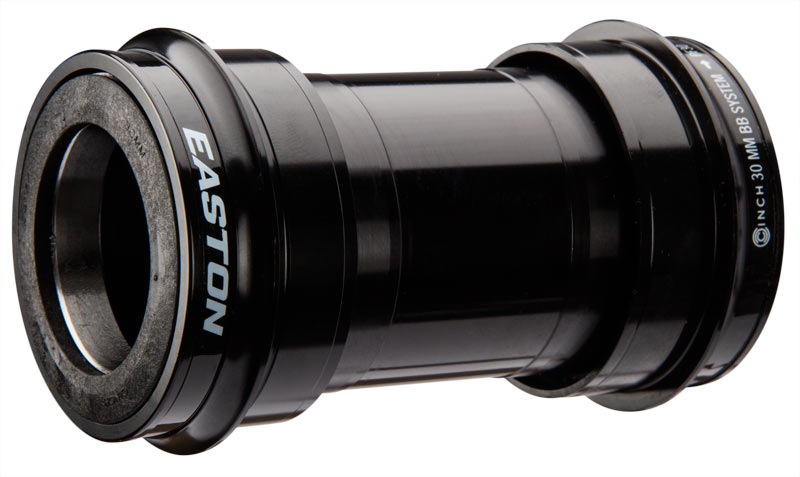
BIKERUMOR: Will they work with any brand’s bottom bracket? Or do you need an Easton / RF BB?
EASTON: The EC90 SL cranks will generally work with any aftermarket 30mm Bottom Bracket, but some spacers may be required.
BIKERUMOR: What makes your BB’s “low friction”?
EASTON: Easton Bottom Brackets have been developed for use in combination with our new Easton EC90 SL crankset.
Bottom Brackets are an essential part of the bicycle that is often overlooked and forgotten, but we saw the BB as another opportunity for performance gains and improved efficiency. Typically with any bearing there is a tradeoff between protecting the bearing internals for longevity and bearing seal drag which impact efficiency. For our new BB we have developed a seal that achieves a very low level of seal drag while still retaining excellent protection qualities. Our in-house testing procedure included developing a 24 hour continuous water invasion test, essentially pouring water into the side of the spinning bearings for an entire day continuously, and our new seal proved to have excellent contaminant exclusion. Combining those results with extensive real-world testing, we are confident of the seal’s performance and overall BB durability while being impressed by the overall efficiency.

We then used a new thinner and low viscosity bearing grease and modified the percentage of grease fill to again find the perfect balance between durability and minimized running friction. We found that a thinner grease, with the correct fill level, was more durable than a thicker grease when spinning at high speed. A thicker lubricant under the centrifugal force would be thrown to the outer bearing race where it would stick and not return to the inner race under lower speeds, leaving it susceptible to increased operating temperatures and higher wear. If you’re running the best crankset on the market, you should have the performance BB to match.
Check our original post for actual weights and first ride impressions.
